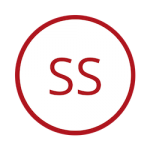Avascent Reactions to the Leading for Impact in Federal IT & Consulting, Women in Leadership Conference
At the end of October, FedHealthIT brought together leading federal IT and consulting executives from government and industry to recognize women creating impact and hear from leading federal government executive panelists about mission-focused strategic programs across the federal technology and consulting community.
Avascent was a bronze sponsor of the inaugural Leading for Impact in Federal IT & Consulting, Women in Leadership Conference, and the team from our Healthcare and Health IT practice share their impressions and key learnings from the panels below.
What do you see as the most important areas where technology and mission converge in the government health market?

Patient care. Technology can and should make it easier for patients/veterans to access services that they qualify for. With technology facilitating access, patients worry less about the logistics and paperwork and more about their well-being.

Data interoperability. This is particularly important for electronic health records within the VA and DoD. It allows patients to have more ownership of their healthcare experience.

This was a big point of discussion at the conference. I agreed with many of the speakers in that implementing new technology just for the sake of having the newest, shiniest thing isn’t helpful.
But instead, it is best to use technology as an enabler of change, thinking about how technology can help you improve things like user and customer experience.

The most critical application of mission-focused technology in government is improving user experience.
Whether it’s a mobile application to enable service members and veterans to access their medical records and schedule medical appointments, a digital census that reaches more citizens, or a well-designed web interface that allows people to accurately and easily file their taxes – the first priority of technology should be making the interactions of both government employees and citizens with government processes as seamless as possible.
Speakers presented several case studies illustrating how innovation happens in government. Which was your favorite and why?
 A US Digital Services (USDS) engineer spoke about making it easier for veterans to keep their home address updated. When Veterans previously wanted to update their address, they would have to update it with every VA stakeholder they interacted with.
A US Digital Services (USDS) engineer spoke about making it easier for veterans to keep their home address updated. When Veterans previously wanted to update their address, they would have to update it with every VA stakeholder they interacted with.
Today, that change happens automatically; if veterans update their status in one location, that is applied to other VA stakeholders. This is a relatively small change, but this sort of small change when applied for every veteran has a huge impact.
 I really enjoyed hearing Stacy Cummings, Program Executive Officer for the Defense Healthcare Management Systems, talk about the ongoing development of EHR systems within DoD health.
I really enjoyed hearing Stacy Cummings, Program Executive Officer for the Defense Healthcare Management Systems, talk about the ongoing development of EHR systems within DoD health.
It was especially interesting to hear about an innovation that is still in development because it gave me more insight into the actual progression and process behind innovation in government.

All of the case studies in which government organizations reached out directly to their users/customers (e.g., veterans using online portals) to ask them what isn’t working, what they want to get out of the government technology products, and how the government can make things easier for them.
I really enjoyed hearing from Lauren Alexanderson, who does User Experience & Design work for the VA, as she discussed how they engage with veterans to improve the vets.gov dashboard to merge each patient’s health and personal records.
 The USDS case study of rolling out Vets.gov, an application for veterans that centralizes their medical records, appointments, pharmacy notifications, etc. was especially interesting. Providing patients with access to their records is a fundamental problem in the healthcare space that all providers, government and commercial alike, have faced.
The USDS case study of rolling out Vets.gov, an application for veterans that centralizes their medical records, appointments, pharmacy notifications, etc. was especially interesting. Providing patients with access to their records is a fundamental problem in the healthcare space that all providers, government and commercial alike, have faced.
The fact that the VA, one of the largest providers of healthcare in the country, has developed a potential solution is extremely impressive and speaks to the VA’s focus on improving the experiences of its beneficiaries. This technology could also serve as a roadmap for other providers in the future and could be the first step in digitalizing healthcare in a way that benefits providers and patients alike.
What did you see as the most important tactics of effective leadership?
 Authenticity. A lot of the women that spoke had held their role or roles within government for quite some time and/or had strong understanding of how their agency operates.
Authenticity. A lot of the women that spoke had held their role or roles within government for quite some time and/or had strong understanding of how their agency operates.
This is important because in order to drive change you have to be able to demonstrate credibility in your knowledge of industry or the systems/processes that you are trying to change.

Collaboration. It is important to leverage the power of the people actually doing the work as well as collaborate and listen to those who you are trying to serve with your project.
 One big theme was the importance of setting high goals for yourself as a leader and for your organization, then doing everything you can to meet those goals. That way, even if you fall short, you have led your team higher than you would have reached had you set a more realistic goal.
One big theme was the importance of setting high goals for yourself as a leader and for your organization, then doing everything you can to meet those goals. That way, even if you fall short, you have led your team higher than you would have reached had you set a more realistic goal.
Other important tactics mentioned were fielding a diverse team with diverse opinions and identifying the limiting mindsets that exist within your organization before you can break them.

Several of the speakers discussed the importance of effective change management and how it hinges on a leadership team that is focused on continuous improvement.
Constant change takes a significant amount of courage, as it requires leaders to acknowledge that the status quo isn’t always right, that mistakes happen, and risks must be taken to enable growth.
It also requires strong teamwork and motivation, as a leader must empower their team to recognize and speak up about problems.
What was your favorite piece of advice from a speaker, or your quote of the day?
 We need to be more focused on user-centered design throughout the entire process of improving health IT – whether that is in setting policy, drafting RFPs, or building the systems. Keeping the user in mind will also be the best means by which to advance the missions of federal health customers.
We need to be more focused on user-centered design throughout the entire process of improving health IT – whether that is in setting policy, drafting RFPs, or building the systems. Keeping the user in mind will also be the best means by which to advance the missions of federal health customers.

One of my favorite pieces of advice came from Jean Moody Williams, Deputy Director of the Center for Clinical Standards and Quality at CMS, which is to always strive for continuous improvement, and that having the tools to know when you are being successful or not is key to that.

I liked former VA Interim Deputy Secretary & CIO Scott Blackburn’s comment that recommitment to the mission is critical to cultural transformation, as it is the common denominator for everyone in your organization.

“Success is having a clear idea and getting people excited about it” – Carolyn Clancy, Deputy Undersecretary for Health Discovery and Advancement, VHA.
What was the overall key takeaway you took from the event?

Government health IT is not going to be radically transformed overnight – it is going to take a lot of minuscule changes from dedicated folks both within and adjacent to industry.
But seemingly insignificant actions (e.g., change in policy, slight shift on a website) can have outsized impact and will collectively move the industry forward.

There are some empowering women leaders in government, and there are different ways that you can be an impactful leader.
While all of these women have been responsible for innovations, their journeys were all different and they were able to impact the industry in their own ways.
 My main takeaway from the event was that while government tends to have a reputation for stagnation and challenges driving and adopting innovation, there are people working in those organizations that are truly fighting hard to make changes.
My main takeaway from the event was that while government tends to have a reputation for stagnation and challenges driving and adopting innovation, there are people working in those organizations that are truly fighting hard to make changes.
And even though it happens slowly, there are really smart people (in this case, really smart women!) who are thinking critically about what needs to be done, what barriers stand in their way, and what they will do to work around them and achieve their goals.

That the upper echelons of government service agencies are filled with driven, motivated, courageous female leaders that are inspiring change in even the most uncertain environments and spearheading a shift in perspective that can only benefit the government and the people it services.





